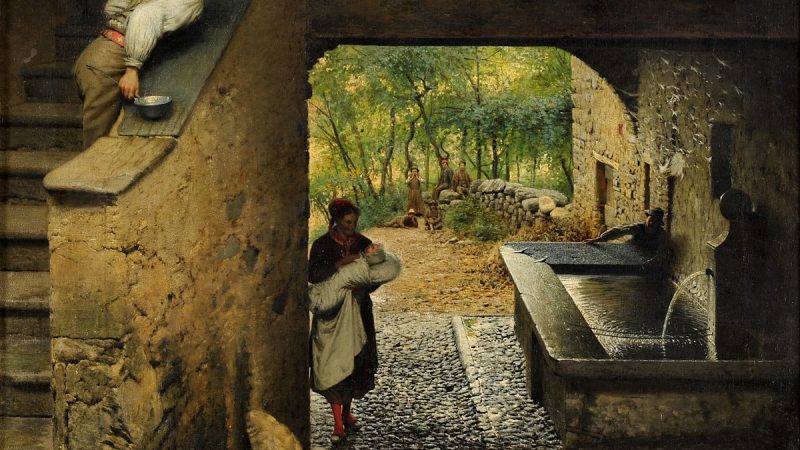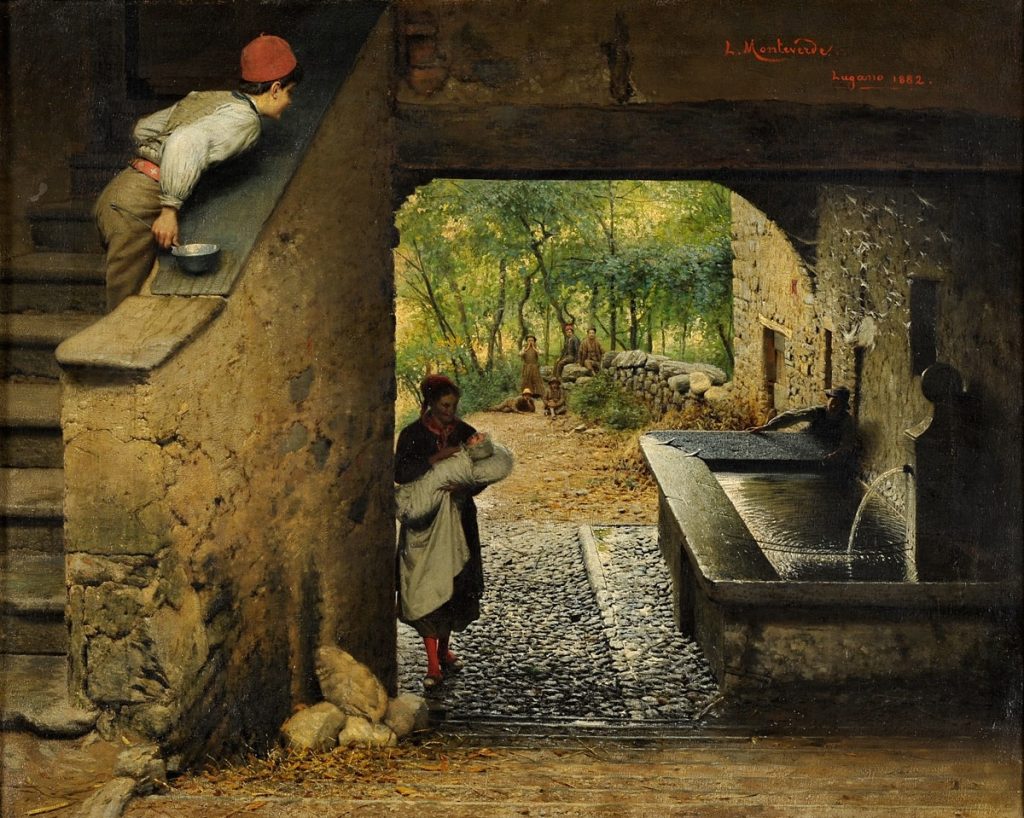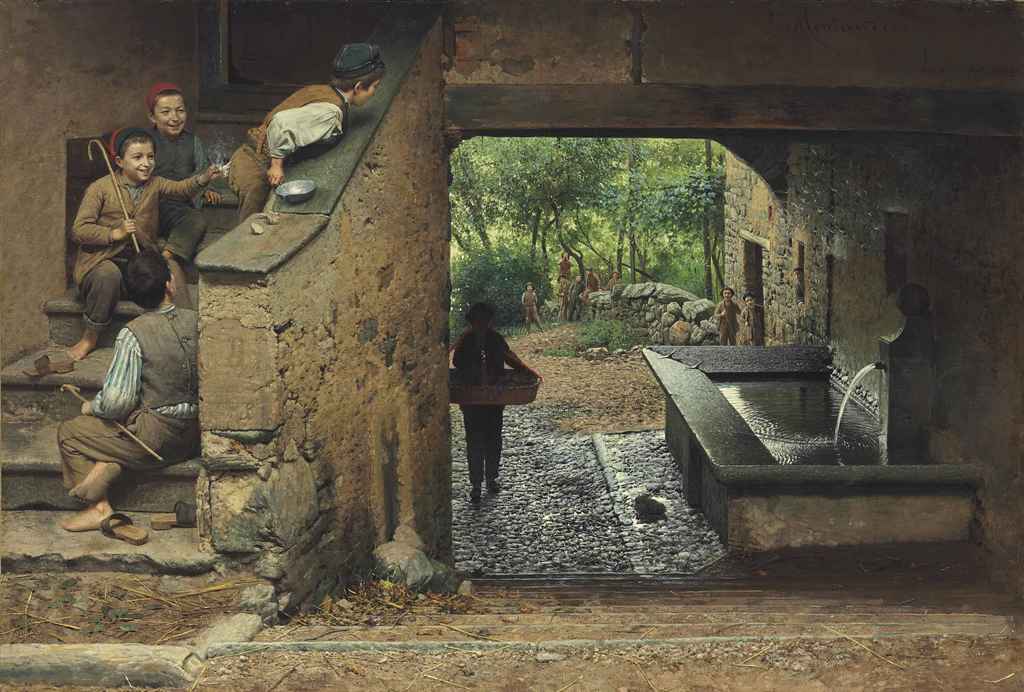Focus: “The Newborn” by Luigi Monteverde

I’ve loved Luigi Monteverde’s The Newborn (1882) for so long it feels like an old friend, the kind you don’t see for years but somehow know intimately. I first found it—or maybe it found me—at NYU, late at night in the dimly lit library, surrounded by that soft hum of silence libraries have. I wasn’t looking for anything profound, just flipping through an old art book with yellowed pages, trying to finish research before my brain gave out. And then I saw it—a small, quiet painting nestled between more dramatic works. But The Newborn stopped me. I remember tilting the book closer, like I was peering into someone’s open window by accident, catching sight of something tender and private.

It didn’t feel like a scene meant to be displayed. It felt like I’d stumbled into a moment so intimate I almost looked away. Almost. But I couldn’t.
There’s this young mother, wrapped in a dark shawl, cradling her infant as she steps forward through a weathered stone archway. The light catches her as she moves from shadow into sun. She’s tired—you can see it in the slope of her shoulders—but there’s this quiet resolve in her step. She’s not posing. She’s not performing. She’s just… beautiful.

And then you notice the boy sitting on the steps—leaning forward, excited. He makes the whole scene feel even more intimate, like you’re seeing it through his eyes. Maybe he’s trying to understand what’s happening, or maybe he’s just mesmerized by the simple fact of new life. You can’t tell if he’s about to call out to her or stay frozen in place.

In the background, there’s a group of villagers standing against a stone wall. Who are they? What are they looking at? The mother, or me? One of them has gestured his arms towards his mouth, either screaming something or whistling. It has a reality to it that almost too modern. It almost feels like viewer is taking an Instagram photo, and one of the villagers is giving a shoutout. Or maybe he’s trying to say to the woman, “Hey Mama!”

Monteverde’s ability to take something so small, so ordinary—a mother stepping into sunlight—and make it feel sacred. He paints rural life without any pretense. There’s no “idyllic village bliss” here that was popular at the time. You can see the worn stones under her feet, the cracks in the archway, the way everything feels just a little weathered, lived-in. And yet, it’s beautiful because of that, not in spite of it.
And this wasn’t the only time he painted that stone archway and fountain. You see it in Caught (1888), where the same arch frames a moment of guilt or confrontation, and in The Prank (1885), where it watches over a group of kids caught mid-mischief. Same space, different stories.
In The Newborn, though, it’s a threshold—a marker of transition. Life shifts beneath that archway in ways both quiet and monumental. You can almost hear the water from the fountain, the way it would sound soft but steady, like a reminder that life flows forward whether or not you’re ready.


The muted colors—browns, soft greys, the dark green of the trees—create a kind of stillness. But it’s not dull. The sunlight is so carefully placed, catching on the mother’s cheek, on the rippling water, on the folds of her shawl. Everything feels textured, real—like you could reach out and feel the rough stone or the soft weight of the cloth.
But what stays with me most is the tenderness. There’s no melodrama here, no grand declarations. Monteverde’s figures don’t need to shout their importance. They just exist, and in doing so, they draw you in until you feel like you’ve stepped into their little world.
The big moments don’t always feel big when they happen. Sometimes they’re quiet—tired footsteps under a stone archway, a child’s wide eyes, the sound of water trickling into a basin. Monteverde captured that truth, and he captured it with such care that every time I look at The Newborn, it feels like a secret only I get to keep. And yet—it belongs to everyone. Just like the beauty of life.
